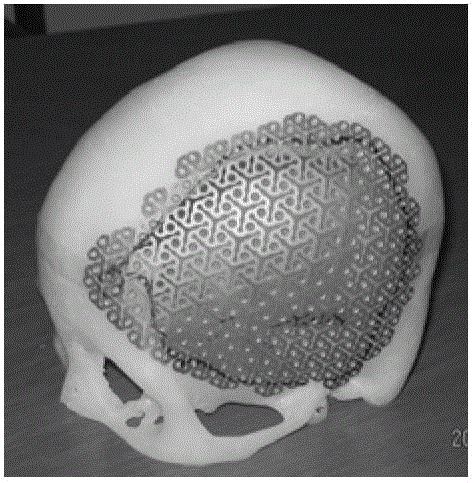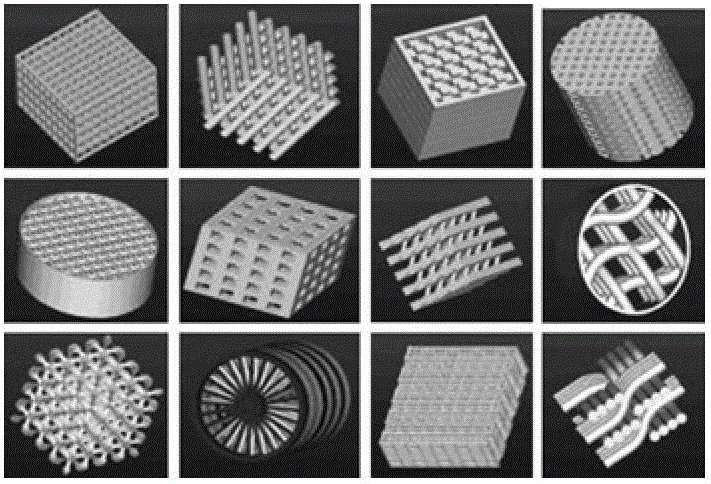Bionic design method of skull tissue engineering scaffold
A tissue engineering scaffold and design method technology, applied in bone implants, medical science, prostheses, etc., can solve problems such as inability to achieve pore connectivity, difficulty in forming biomaterials, and difficulty in ensuring connectivity.
- Summary
- Abstract
- Description
- Claims
- Application Information
AI Technical Summary
Problems solved by technology
Method used
Image
Examples
Embodiment Construction
[0048] In order to make the objectives, technical solutions, and advantages of the present invention clearer, the following describes the embodiments of the present invention in further detail.
[0049] In view of the various deficiencies of the clinical repair methods of the skull defect, the application of bone tissue engineering to the clinic is urgently requested. The problem to be solved in the design of the skull scaffold is how to construct a microscopic simulation structure with mutual conduction. See Figure 20 In the present invention, by measuring the CT image of natural air-dried skull tissue, the corresponding algorithm is proposed to carry out the bionic design of the defected skull tissue engineering scaffold structure. This is of great significance for accelerating the clinical application of skull tissue engineering repair. There is no report on the bionic design of skull defects based on micro-CT technology.
[0050] 101: Perform three-dimensional reconstruction ...
PUM
 Login to View More
Login to View More Abstract
Description
Claims
Application Information
 Login to View More
Login to View More - R&D
- Intellectual Property
- Life Sciences
- Materials
- Tech Scout
- Unparalleled Data Quality
- Higher Quality Content
- 60% Fewer Hallucinations
Browse by: Latest US Patents, China's latest patents, Technical Efficacy Thesaurus, Application Domain, Technology Topic, Popular Technical Reports.
© 2025 PatSnap. All rights reserved.Legal|Privacy policy|Modern Slavery Act Transparency Statement|Sitemap|About US| Contact US: help@patsnap.com



